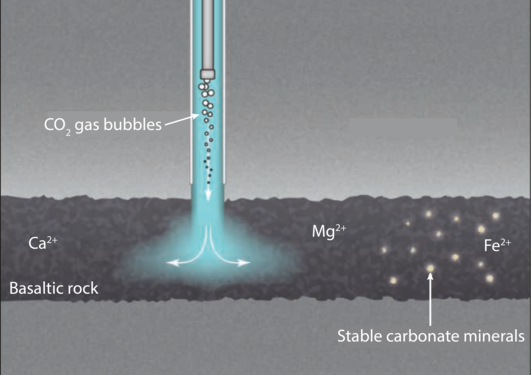Structural and petrographic analysis of deformed volcanic rocks around the Husavik-Flatey Fault Zone, Iceland
This Master's project was designed for Thomas Wiers Bjørnsen who started his Master's program in Earth Sciences, UiB, in the fall semester 2023. The Master's project is given by the research group Geodynamics and basin studies.
Main content
Project description
Climate change is one of the biggest global challenges in the present day. The changing climate has largely been driven by an unprecedented increase in the amount of greenhouse gases, particularly carbon dioxide (CO2), in the atmosphere. Subsurface CO2 storage, particularly in geological formations, is critical to the success of the carbon capture, utilization, and storage (CCUS) technologies targeted at reducing the amount of atmospheric CO2 and potentially reversing the climate change problem. Studies have shown that a range of geological formations can potentially act as CO2 storage reserviors, viz include, (i) sedimentary formations like saline aquifers, depleted hydrocarbon reservoirs, coal beds (conventional reservoirs), and (ii) mafic and ultramafic rocks like basalts (unconventional reservoirs). In the North Sea, although conventional reservoirs for CO2 storage have been extensively studied, unconventional reservoirs like basalts have received far less attention. Consequently, there is a lack of fundamental knowledge of the structural geometry, geochemical and petrophysical properties of basalts in the offshore North Sea volcanic province, and their implication as alternative targets for safe and long-term subsurface CO2 storage in the North Sea.
The proposed project aims to address the above knowledge gaps by using outcrop analogues from the Husavik – Tjornes Peninsula, northern Iceland to investigate the potential of rift-related basalts as subsurface CO2 storage reservoirs.
The proposed project will involve two master’s student who will focus on the following two aspects:
Master’s Project 1 (Thomas Wiers Bjørnsen): A detailed characterisation of the structures (including, faults, veins, fracture corridors, and dykes), and the petrography of sheared volcanic rocks around a major strike-slip fault, the Husavik-Flatey Fault Zone (HFFZ), Iceland. Such analysis will provide important insight that will improve our understanding of the role of brittle structures on fluid flow in the subsurface.
Master’s Project 2 (Carl August Brechan): An analysis of the geochemical and petrophysical properties of a series of basaltic lava flows around the Husavik – Tjornes Peninsula, northern Iceland. The analysis of the lava flows will be based on, (i) the base, core, and top of the lava flows, and (ii) altered vs unaltered lava flows, which will allow us to assess the spatial variability in the geochemical and petrophysical properties of basaltic lava flows, and the consequent effect on their CO2 storage potential.
Proposed course plan during the master's degree (60 ECTS):
GEOV251
GEOV300
GEOV361
GEOV364
GEOV315
GEOV352
GEOV360
GEOV362
Field- lab and analysis
ca. two weeks of fieldwork in Iceland
